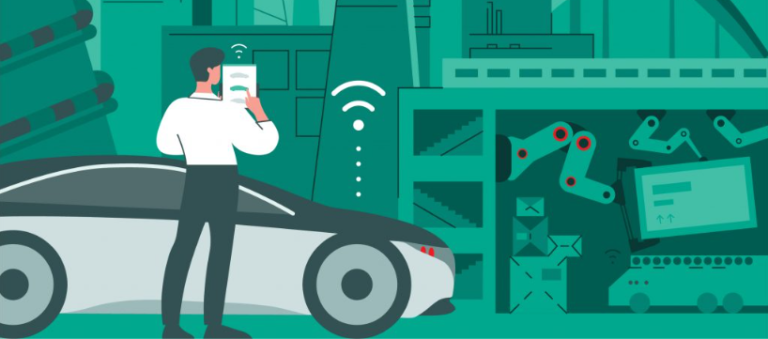

The use of Internet of Things (IoT) devices in business is growing at an exponential rate. According to Gartner, the number of global IoT connections is expected to rise to approximately 25 billion by 2025.
Simply put, IoT covers every device connected to the internet, from wearables to industrial sensors. It is increasingly being used to define connected objects that ‘talk’ to each other through sensors with the capacity to collect data and use it to make business more efficient and our lives easier.
Initially suggested as a way to improve organizational processes, IoT devices have quickly become a way of enhancing our personal lives as well. While this led them to gain popularity in devices such as smartphones, watches and voice assistants, they still have a strong impact in organizations.
Here, connected devices impact nearly every business industry, with devices including machine learning for predictive maintenance, smart grid, sensors for shipping and logistics, automated manufacturing process, and connected HVAC (Heating, Venting, and Air Conditioning) systems among others. These allow for data collection, exchange and analysis of many more touchpoints across the full set of business processes.
With the addition of large volumes of data from all these elements, businesses can gain actionable insights to help them better understand their workflow, drive productivity and increase efficiency – as well as ultimately transform their business processes. As well as streamlining existing businesses, organizations are able to consider potential new directions, development of new products or services and expanding lines, all thanks to IoT capabilities.
Yet, with this rise in connected devices also comes increased need for security. Gartner has highlighted that nearly 20% of organizations have already observed cyberattacks on IoT devices in the past three years. Because of their levels of connectivity and access to business networks, IoT systems increase the potential cyberattack surface at any organization. Therefore, the most important consideration for organizations looking to introduce IoT devices into their business processes is to ensure they provide strong IoT system security.
This report helps technology suppliers, service providers, organizations and security professionals who are planning (or already implementing) IoT systems to understand the growing IoT landscape. It looks at the range of opportunities that IoT offers for organizations, along with the challenges these new systems present. It also provides cybersecurity recommendations for IT security professionals to follow, to make the most of their IoT platform and secure it from potential data breaches and attacks on the whole network.


The use of Internet of Things (IoT) devices in business is growing at an exponential rate. According to Gartner, the number of global IoT connections is expected to rise to approximately 25 billion by 2025.
Simply put, IoT covers every device connected to the internet, from wearables to industrial sensors. It is increasingly being used to define connected objects that ‘talk’ to each other through sensors with the capacity to collect data and use it to make business more efficient and our lives easier.
Initially suggested as a way to improve organizational processes, IoT devices have quickly become a way of enhancing our personal lives as well. While this led them to gain popularity in devices such as smartphones, watches and voice assistants, they still have a strong impact in organizations.
Here, connected devices impact nearly every business industry, with devices including machine learning for predictive maintenance, smart grid, sensors for shipping and logistics, automated manufacturing process, and connected HVAC (Heating, Venting, and Air Conditioning) systems among others. These allow for data collection, exchange and analysis of many more touchpoints across the full set of business processes.
With the addition of large volumes of data from all these elements, businesses can gain actionable insights to help them better understand their workflow, drive productivity and increase efficiency – as well as ultimately transform their business processes. As well as streamlining existing businesses, organizations are able to consider potential new directions, development of new products or services and expanding lines, all thanks to IoT capabilities.
Yet, with this rise in connected devices also comes increased need for security. Gartner has highlighted that nearly 20% of organizations have already observed cyberattacks on IoT devices in the past three years. Because of their levels of connectivity and access to business networks, IoT systems increase the potential cyberattack surface at any organization. Therefore, the most important consideration for organizations looking to introduce IoT devices into their business processes is to ensure they provide strong IoT system security.
This report helps technology suppliers, service providers, organizations and security professionals who are planning (or already implementing) IoT systems to understand the growing IoT landscape. It looks at the range of opportunities that IoT offers for organizations, along with the challenges these new systems present. It also provides cybersecurity recommendations for IT security professionals to follow, to make the most of their IoT platform and secure it from potential data breaches and attacks on the whole network.